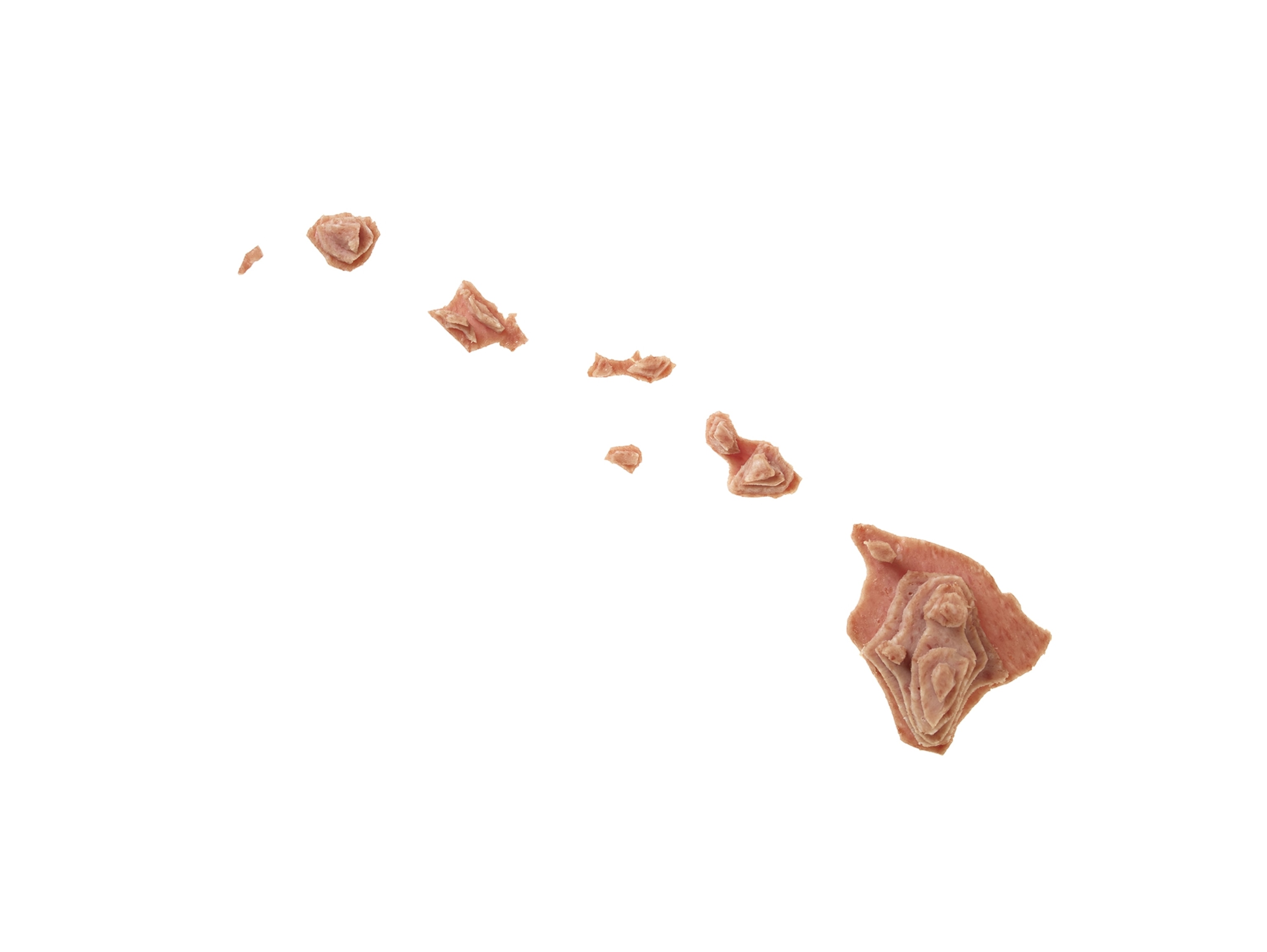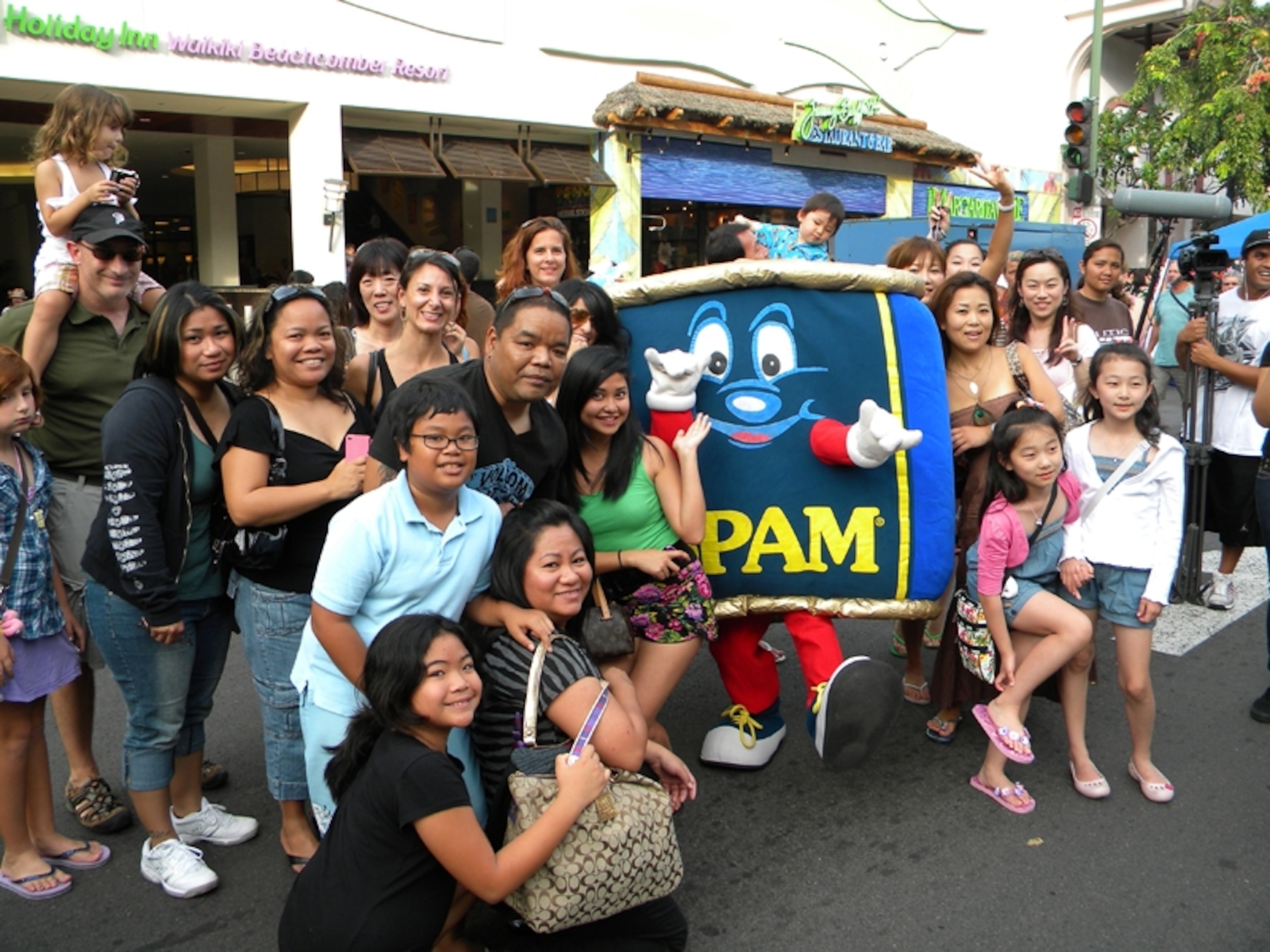
How Spam Helped Shape Hawaii
America’s 50th state is known throughout the world for its beautiful beaches, volcanic vistas, exotic wildlife and tropical fruit. But there’s one food product that is beloved over all others in Hawaii–Spam. What you may not know is that the much maligned meat in a can may have saved the islands during World War II.
Spam was originally created by Minnesota’s Hormel Foods in 1937 as a way to help busy American housewives serve a quick and easy pork dish. The Spam brand name has long been a subject of speculation. Some say it’s from the words “spiced ham.” Others say its an acronym for “shoulders of pork and ham.” Even Hormel isn’t saying exactly. “The real answer is known by only a small circle of former Hormel Foods executives. And probably Nostradamus,” says the official Spam website.
Spam has been the butt of jokes for decades, even lending its name to the unforgettable Monty Python sketch of a waitress in drag in a diner offering only dishes made with the stuff (eggs and Spam, Spam and eggs and Spam, etc.,) yet Hawaiians embrace it un-ironically.
Hawaiians like Spam so much, they consume an estimated 5 million pounds of it a year. Per capita, they consume more than anyone else in the U.S. That works out to about six cans a year for every man, woman and child, which is just a little eyebrow-raising, given the sodium and fat content of that can. (A 12-oz. can is supposed to contain six servings, and each serving includes 25 percent of the U.S. recommended daily fat intake and 33 percent of a day’s sodium. Does anyone eat only one serving?)

So it’s not exactly health food. But you have to admit, Spam is tasty. Hawaiians use it’s slightly spiced, salty flavor in everything from breakfast scrambles with eggs to a sushi-like concoction made with rice and a seaweed wrap known as musubi (moo-sue-bee, my Hawaiian colleague informs me, with no syllable accented stronger than another).
Musubi is a favoriteMusubi is a favorite of former Hawaiian resident President Barack Obama, who reportedly seeks it out whenever he’s on vacation there. Musubi is sold everywhere on the island, from gas stations to fine dining establishments. it has also, apparently, become a verb. Hormel recently introduced a teriyaki-flavored SPAM product to “encourage consumers to Musubi.” There’s even an adorable musubi baby costumemusubi baby costume and a yearly festival in Waikiki known as Spam Jam Hawaii, which falls on May 2 this year.
The family-friendly Spam Jam attracted about 25,000 people last year. It features local musicians, crafts and special Spam dishes by local and national chain restaurants. “With all our different cultures here, there are a lot of dishes that can be made with it,” says Karen Winpenny, spokeswoman for Spam Jam Hawaii. The elegant restaurant/store Chai’s Waikiki is expected to take things up to highbrow level by offering Spam and fresh ahi katsu with wasabi curry, but don’t worry, there will be plenty of Spam fried rice and Spam grilled cheese on offer. And dessert, too: Ono Pops is making peanut butter cream pops with bits of candied Spam inside. Donations of Spam cans will be accepted by the Hawaii Food Bank because “it is the most requested item,” says Winpenny.

While the island’s love affair with Spam is all sunshine and rainbows now, it wasn’t always this way. During WWII, American GIs were loaded down with the stuff and more than willing to share. But the story goes deeper. According to food historian Rachel Laudan, who spent years living in Hawaii and wrote a book called The Food of Paradise: Exploring Hawaii’s Culinary Heritage, Spam’s spread has more to do with the American government restricting Hawaii’s deep-sea fishing operations, owned mainly by the Japanese, in the years leading up to WWII. Because there were so many folks of Japanese descent on Hawaii’s islands, it wasn’t possible to put them all in camps, she says, as was done on the mainland in one of America’s saddest history chapters.
Donald M. Shugg of the University of Hawaii explains it this way in his 2001 paper on the fishing industry in the Hawaiian Journal of History:
“Growing tensions between the United States and Japan during the 1930s led the United States military to view Hawai’i’s fishing fleet as a serious threat to national security. For example, when the Japanese government arranged for many of Hawai’i’s Japanese fishermen to attend fishing schools in Japan, there were concerns that the fishermen were being interrogated by Japanese Navy officials on hydrographic conditions in Hawai’i. In 1940, suspicions about the loyalty of Japanese immigrants resulted in implementation of a federal statute that prohibited fishing vessels of five tons or more from obtaining licenses unless the vessel owner was a U.S. citizen. The next year, the Territory passed a law prohibiting aliens from fishing with hukilau, gill, or purse seine nets within one mile of shore in order to preserve 123 fishery resources for native Hawaiians and other U.S. citizens. This legislation abruptly ended the careers of many fishermen in Hawai’i.”
Without SPAM, other canned meats and sardines, Laudan tells Eater: “The [Hawaiian] economy would have collapsed.”
Spam also helped feed the starving populations in various Asian Pacific nations devastated by that war, and it has remained immensely popular. To this day, Spam is a well-known addition to many modern Korean and Filipino dishes.

For its part, Hormel fully embraces the kitsch, hawking mugs and mouse pads and sharing recipes for Spam chile rellenos and a Hello Kitty Spam musubi creation on its website. This week, it also launched a SPAMerica tour on a big yellow bus to tout its virtues to American cities all over the country.
I guess if you can’t beat ’em, you join ’em.







